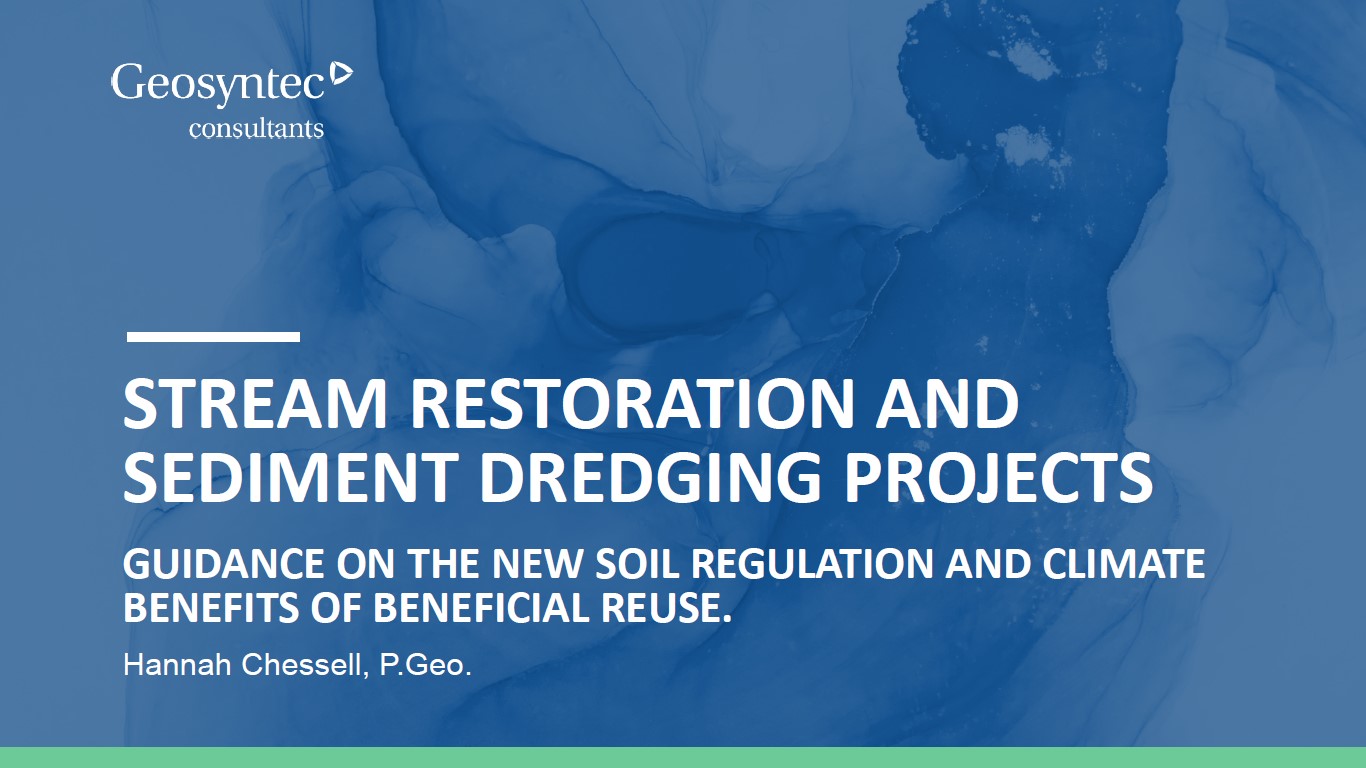TRACK 2, DAY 1
Stream Restoration and Sediment Dredging Projects – Guidance on the New Soil Regulation and Climate Benefits of Beneficial Reuse
ABSTRACT
Stream restoration and sediment dredging projects generate soil. New rules on soil management in Ontario intersect to some degree with any municipal or regional project that removes or imports soil or sediment. Readying projects for the new rules has required deep evaluation of the nuances of soil movement on a project by project basis and has identified the need to forecast and plan for soil management requirements. In particular, the considerations for the removal and transportation of soil from stream restoration and sediment dredging projects can be complex. There are also potential climate benefits from soil management and beneficial reuse of soil.
This presentation will outline some relevant case studies relating to the following scenarios: (i) Beneficial Reuse Options and Climate Benefits; (ii) Sediment Dredging and Transportation. Sediment from routine maintenance dredging is subject to excess soil management rules and transportation requirements and potentially subject to on-line registration;(iii) Stormwater Management Pond Cleanout. The Regulation indicates segregating into stockpiles is required and typically space is limited so other alternatives need to be considered; (iv) Creek and Shoreline Work. There are several exemptions in the Regulation to consider and incorporate source details into projects such as for imported topsoil or material from a quarry.
ABOUT THE PRESENTER

Hannah Chessell, Geosyntec Consultants
Hannah Chessell is a Professional Geoscientist at Geosyntec based in Waterloo with experience focused on environmental site assessments and characterization, excess soil management planning, and remediation. Hannah has supported many stakeholders including several municipalities navigate the new On-Site and Excess Soil Regulations (O. Reg. 406/19).

